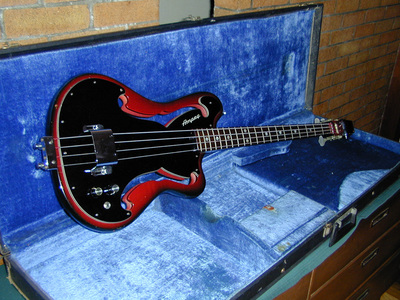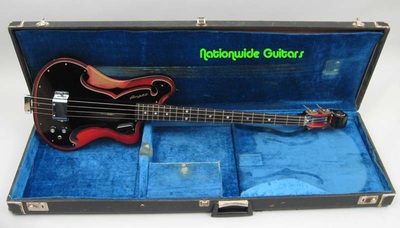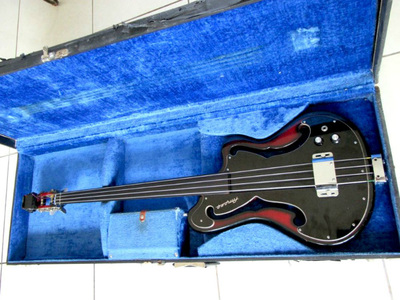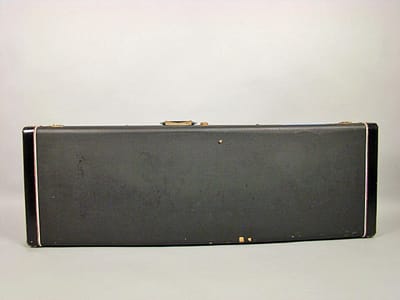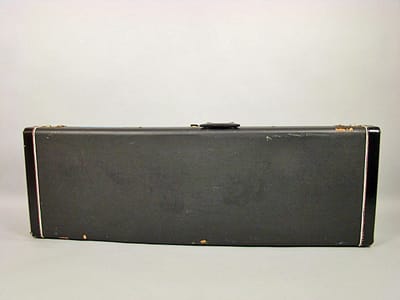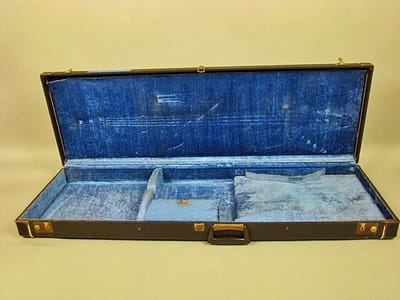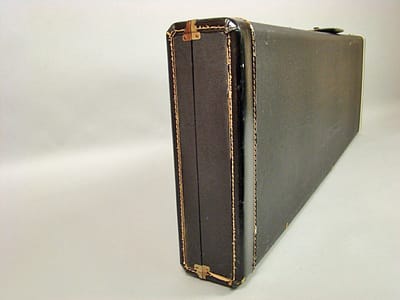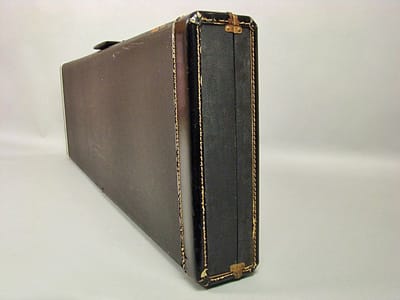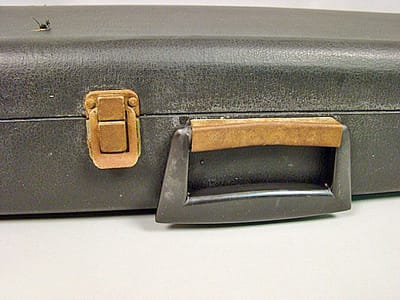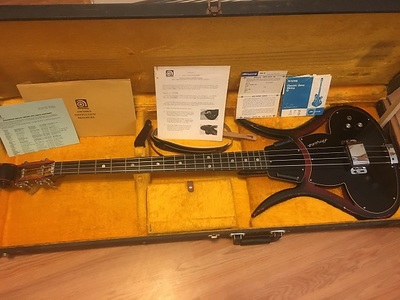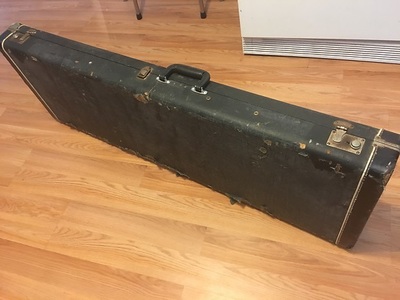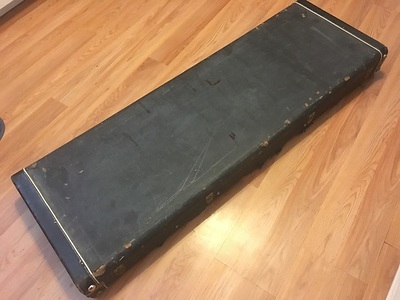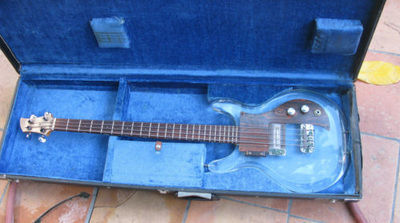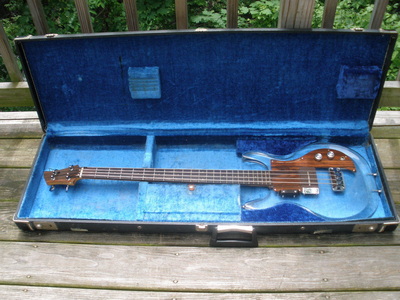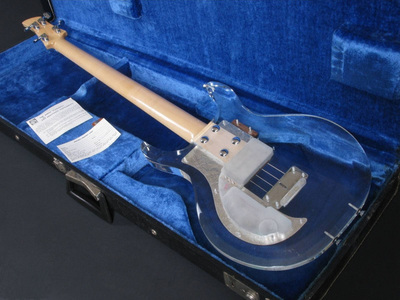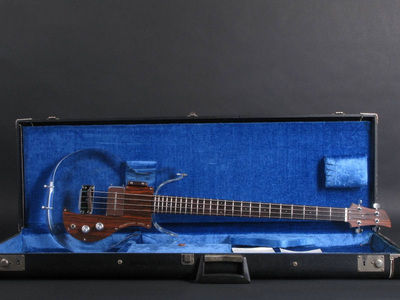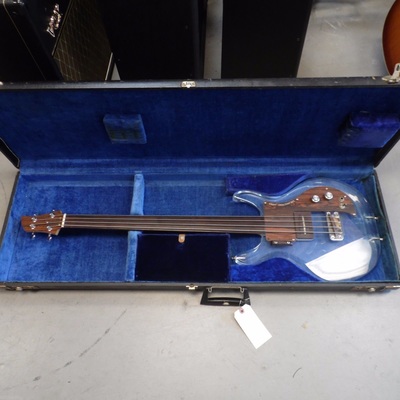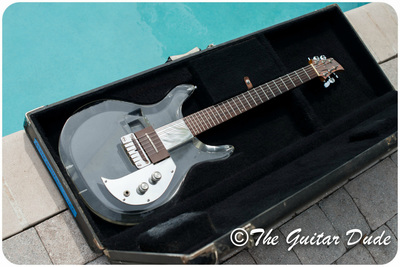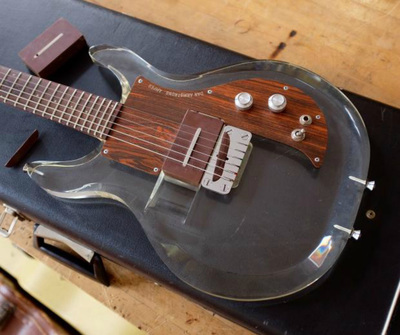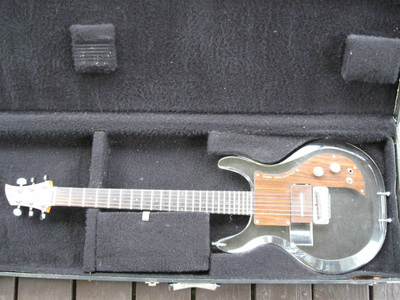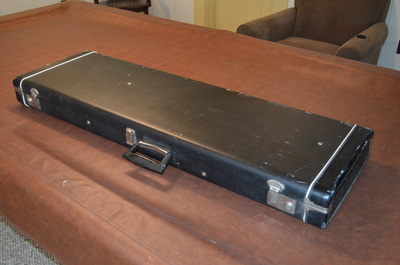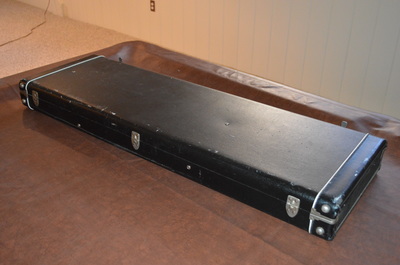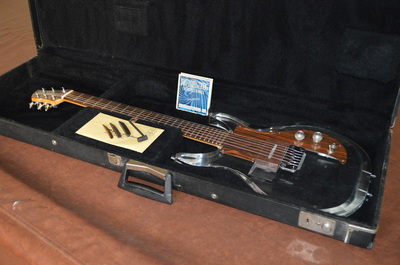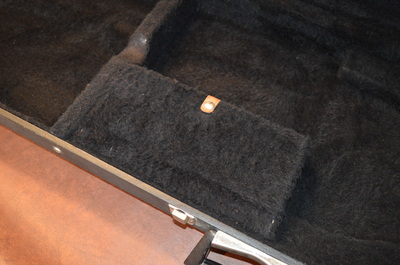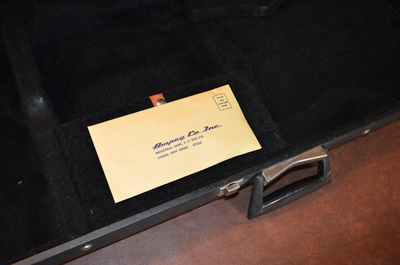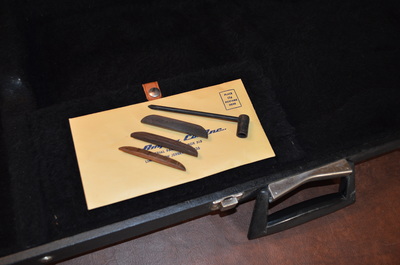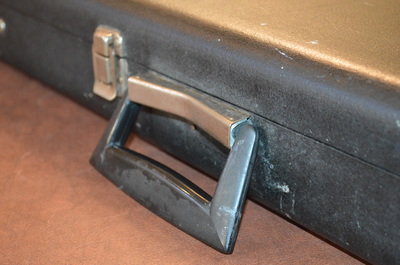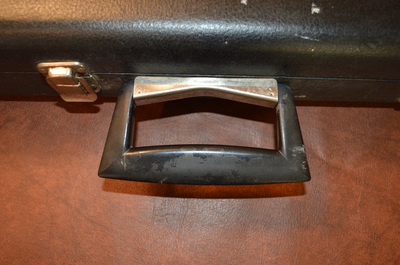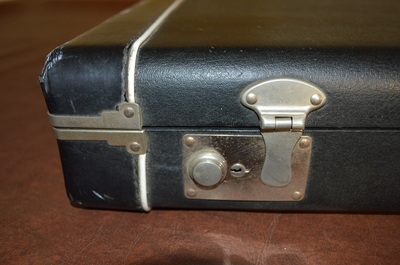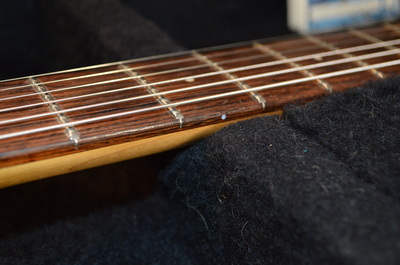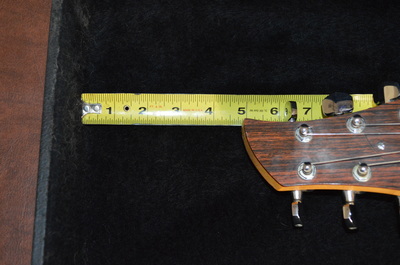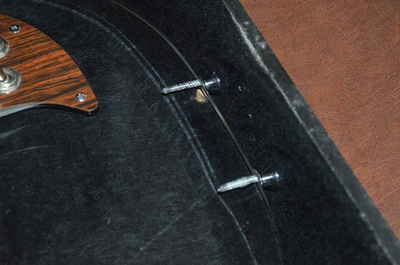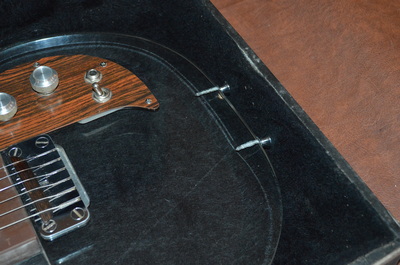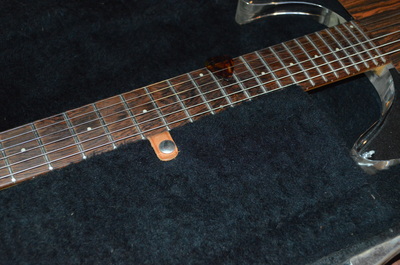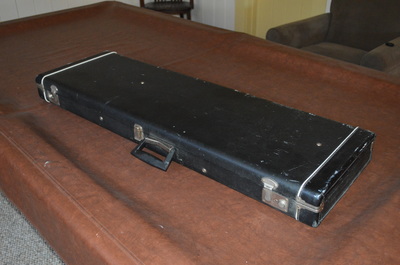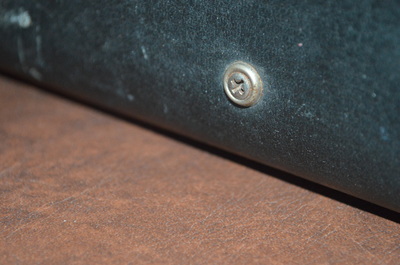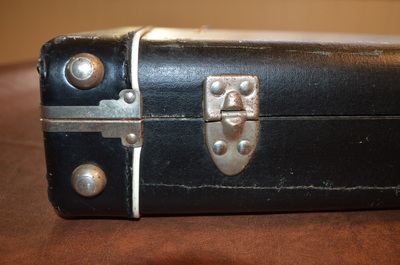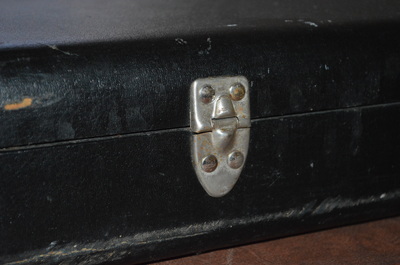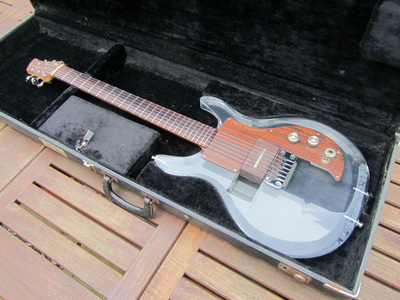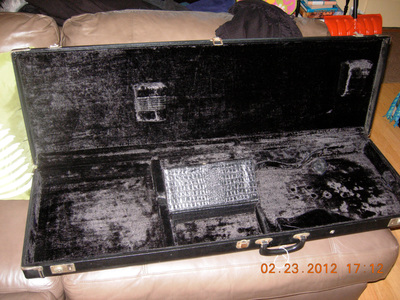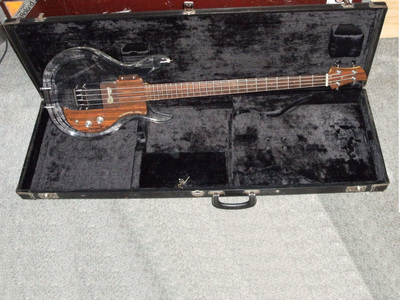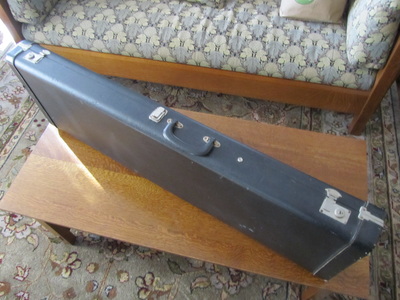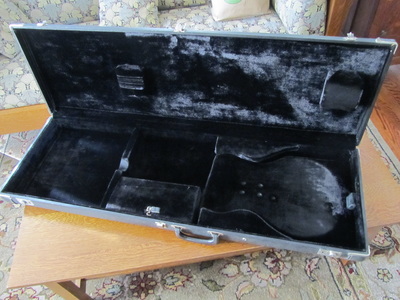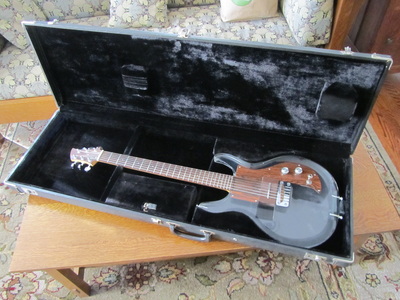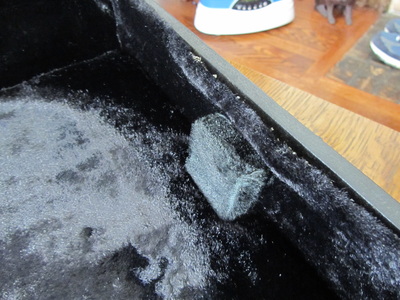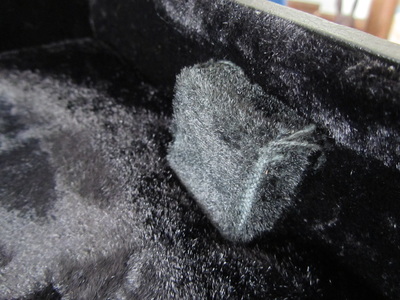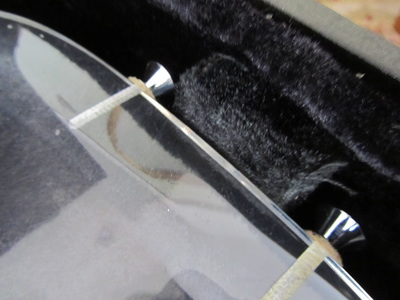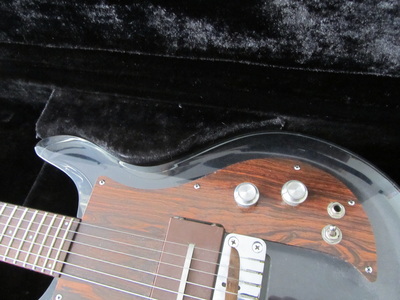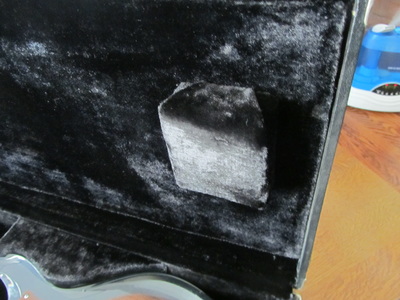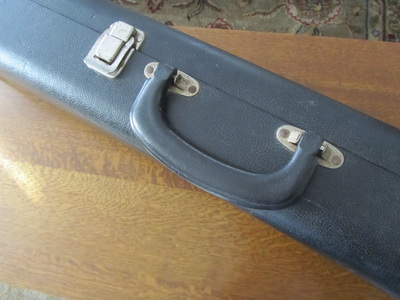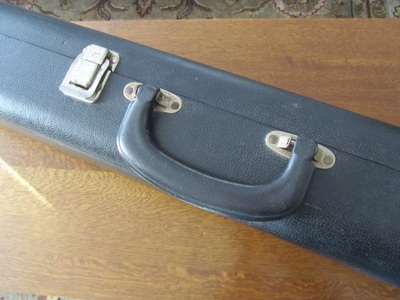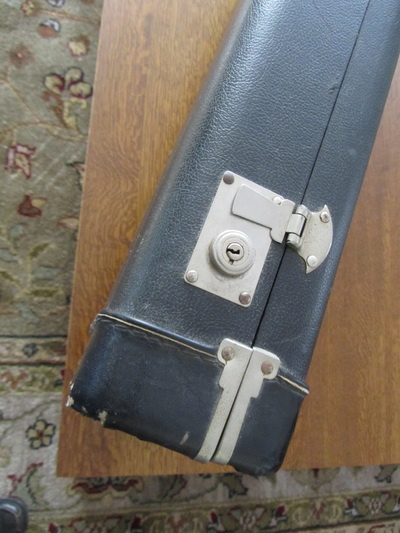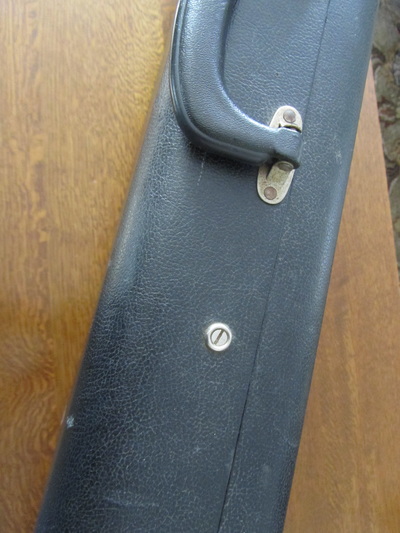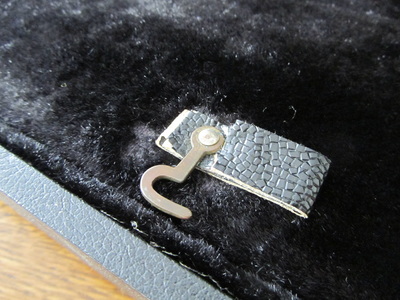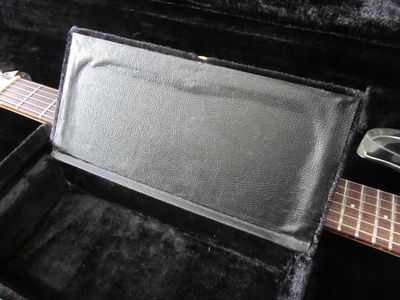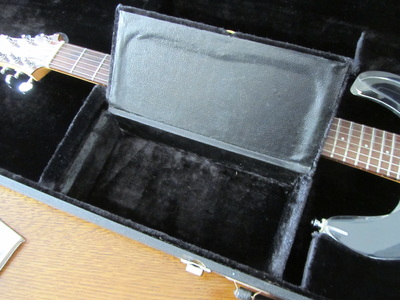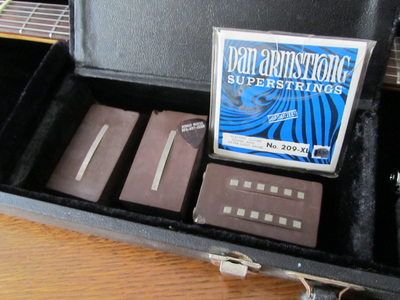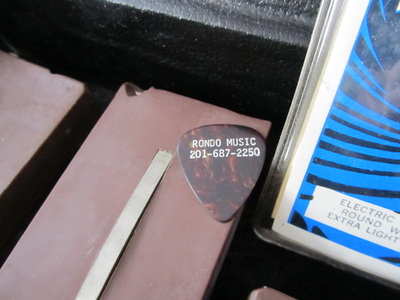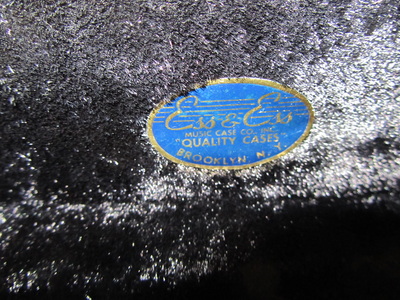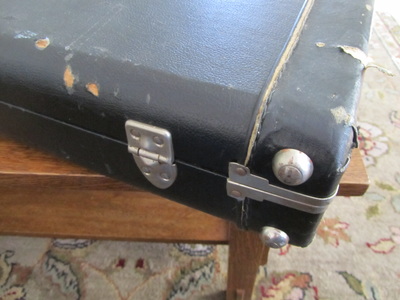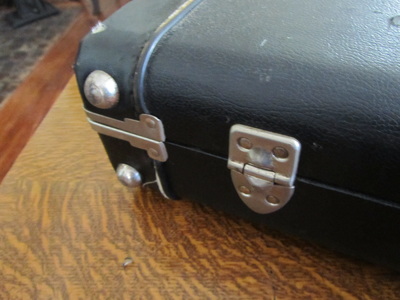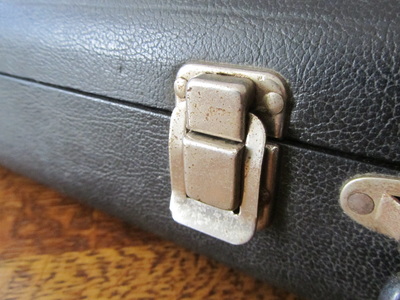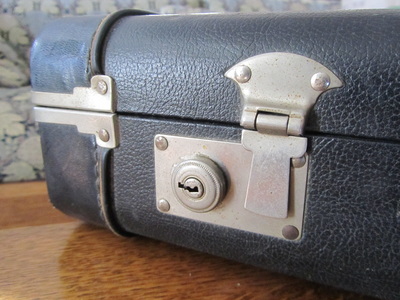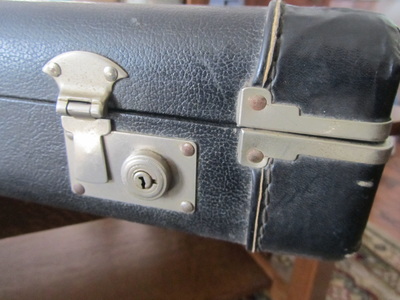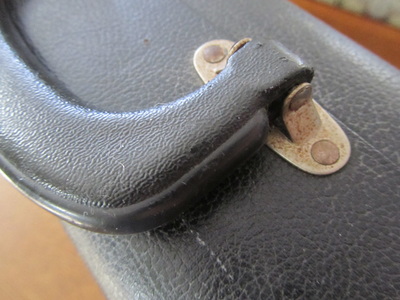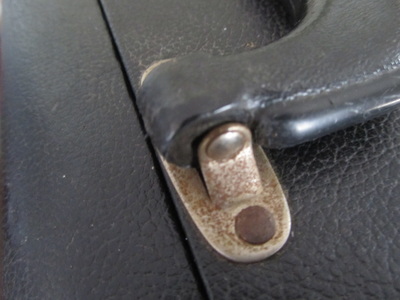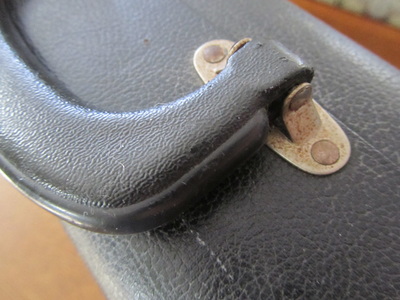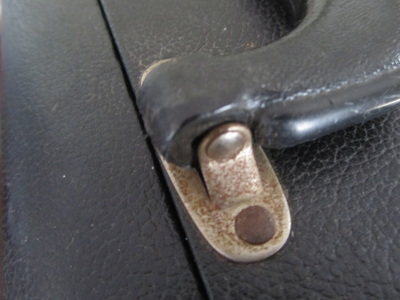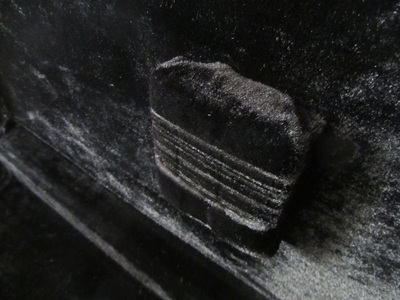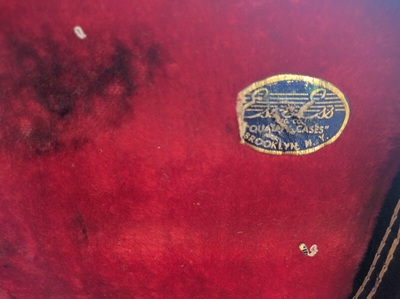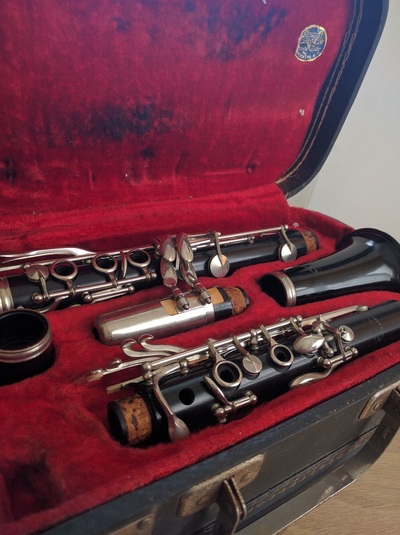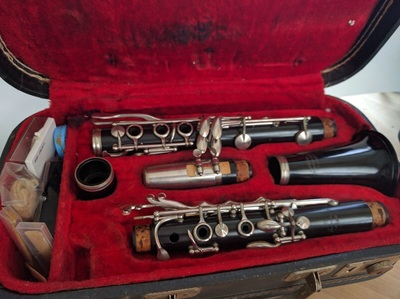Dan Armstrong FAQ's
What is the correct OEM case for my Dan Armstrong guitar or bass?
Dan Armstrong guitars and basses were often purchased with an OEM case and a large number of instruments seen today still have their original cases. The cases seem to fall into three categories, and for the moment we're going to call them: 1) 'Transition' or pre-production cases; 2) 'First Generation' cases; and 3) 'Second Generation' cases with what is believed to be an improved handle and some other changes. The vast majority of cases were second-generation cases.
It is important to note that Dan Armstrong guitar cases and bass cases are identical, owing to a common body profile and the fact that a case tightly fitted in length to a short-scale (30") bass would also work for the guitar. There was also a convenience benefit for Ampeg in not having to purchase or stock two different-sized cases.
Dan Armstrong guitars and basses were often purchased with an OEM case and a large number of instruments seen today still have their original cases. The cases seem to fall into three categories, and for the moment we're going to call them: 1) 'Transition' or pre-production cases; 2) 'First Generation' cases; and 3) 'Second Generation' cases with what is believed to be an improved handle and some other changes. The vast majority of cases were second-generation cases.
It is important to note that Dan Armstrong guitar cases and bass cases are identical, owing to a common body profile and the fact that a case tightly fitted in length to a short-scale (30") bass would also work for the guitar. There was also a convenience benefit for Ampeg in not having to purchase or stock two different-sized cases.
|
Ampeg 'Scroll' Bass Cases. Before commenting (below) on the Dan Armstrong cases, we think it's helpful to look at examples of the Ampeg 'Scroll' Basses (produced '66-'67) and their respective OEM cases. Because Ampeg had already been building these basses prior to development of the Dan Armstrong series of instruments, the company had already established a relationship with a case supplier. It is likely that the supplier was Ess & Ess of Brooklyn, NY, as the cases bear a strong resemblance in terms of interior color, handle, and use of contoured interior bolsters.
At right, an individual scroll bass case being offered by Grinning Elk Music Company in January 2016. This set of photos shows that the features of the scroll bass case were very similar to the Dan Armstrong cases which came about a year later, including corner brackets, handle, accessory compartment latch, and contoured side bolsters. At right, a rare Ampeg 'Devil' bass and related OEM case. Notice how the interior accessory compartment, side bolsters, body padding and neck rest are virtually identical to the Dan Armstrong cases that came later. |
|
|
Transition Dan Armstrong Cases. These are very rare cases and can be easily identified by their bright blue interiors, which seems to be a carryover from the scroll bass cases. All other aspects of the case seem to be identical to the First Generation DA cases (shown below), including interior bolsters and neck rest that have been customized to fit the Dan Armstrong instruments. Shown at right are bass D130A, bass D146A, bass D375A, and bass D2229A. As you would expect, the transition cases seem to be associated with lower serial numbers, but not exclusively.
|
|
First Generation Dan Armstrong cases can be identified by the change to black velour for the interior, a 1950's-style case handle, and also by the orientation of the accessory case cover, which is hinged on the outside and therefore opens to the inside of the case.
First Generation cases are also identified by the use of six screws and grommets on the outside of the case. Two of these screws are used to attach the neck rest, two are used to attach the pads in the lid, and the last two attach the S-shaped side bolsters that cushion the plexiglas body. First Generation cases seem to have been in use for roughly the first 300 guitars. More specifically, we know that A379D has a first-generation case, while A406D and A412D have the updated second-generation cases. |
|
|
Second Generation Dan Armstrong Cases can be identified by the following:
1) The handle has changed to hard plastic and the design is considerably more modern. 2) The accessory case cover is now reversed so that the compartment opens toward the user. This would have been a little more convenient when rooting around for picks or an extra pickup. The lid now closes with a hook and eyelet arrangement, replacing the former snap button. 3) A small padded bolster has been added to the bottom of the case. This cushion fits between the strap buttons, and seems to have been designed to support the bottom of the instrument and keep the strap buttons from digging into the velour. 4) The two screws that helped secured the padded bolsters to the lid of the case are gone. Instead, the pads just seem to be glued to the interior velour. Similarly, the two screws attaching the neck brace have been eliminated, leaving just the two screws attaching the side bolsters. Second Generation cases seem to have been introduced starting with guitars with serial numbers in the early 400's (see A406D and A412D) and continued through to the end of the run. |
Above, various examples of 2nd-generation cases.
Below, details of 2nd-generation case belonging to A623D. |
Why doesn't my guitar (or bass) match the case? There are many instances where an early guitar is matched up with a later second-generation case, and vice versa. Over the last 45 years, there's been ample time for cases to get separated from one instrument and find a new home with another. Opportunities to mix and match are even greater because the guitar and bass share the same case. Or perhaps someone decided to forego purchasing an OEM case initially, but went back and ordered one later. From a value perspective, there's probably not much difference between the first and second generation cases - the more important point would be the general condition of the case, particularly the mechanical condition of the latches and handle.
|
About Ess & Ess. The Ess & Ess Music Case Co., Inc. of Brooklyn, NY was started by the Sandler family in 1950 as an OEM musical case supplier, and the client list eventually came to include numerous guitar manufacturers such as Gibson, Gretsch, and Guild. In addition to guitars, the company also manufactured cases for other types of instruments, including a clarinet case as shown below. Note that the blue & gold foil sticker design for this case (possibly dating from the 1950's when the company was first known as Ess & Ess Mfg. Co.) is almost identical to the sticker supplied with the Dan Armstrong cases of 1969 - 1971.
Ess & Ess was led by Martin E. Sandler from 1964 to 1984, at which point the company reportedly closed for business and sold the building. Information about Ess & Ess comes from various online sources and blogs, but Steve Kirtley's web site Vintage Musical Instrument Cases is especially informative and contains a wealth of information on many of the major case manufacturers, as well as repairing / restoring vintage guitar cases.
|
Above, the fading Ess & Ess sign is just visible above the doorway at 95 Grand St., Brooklyn, NY. Photo courtesy Frank H. Jump, author of Fading Ads of New York City, The History Press, 2011.
|
